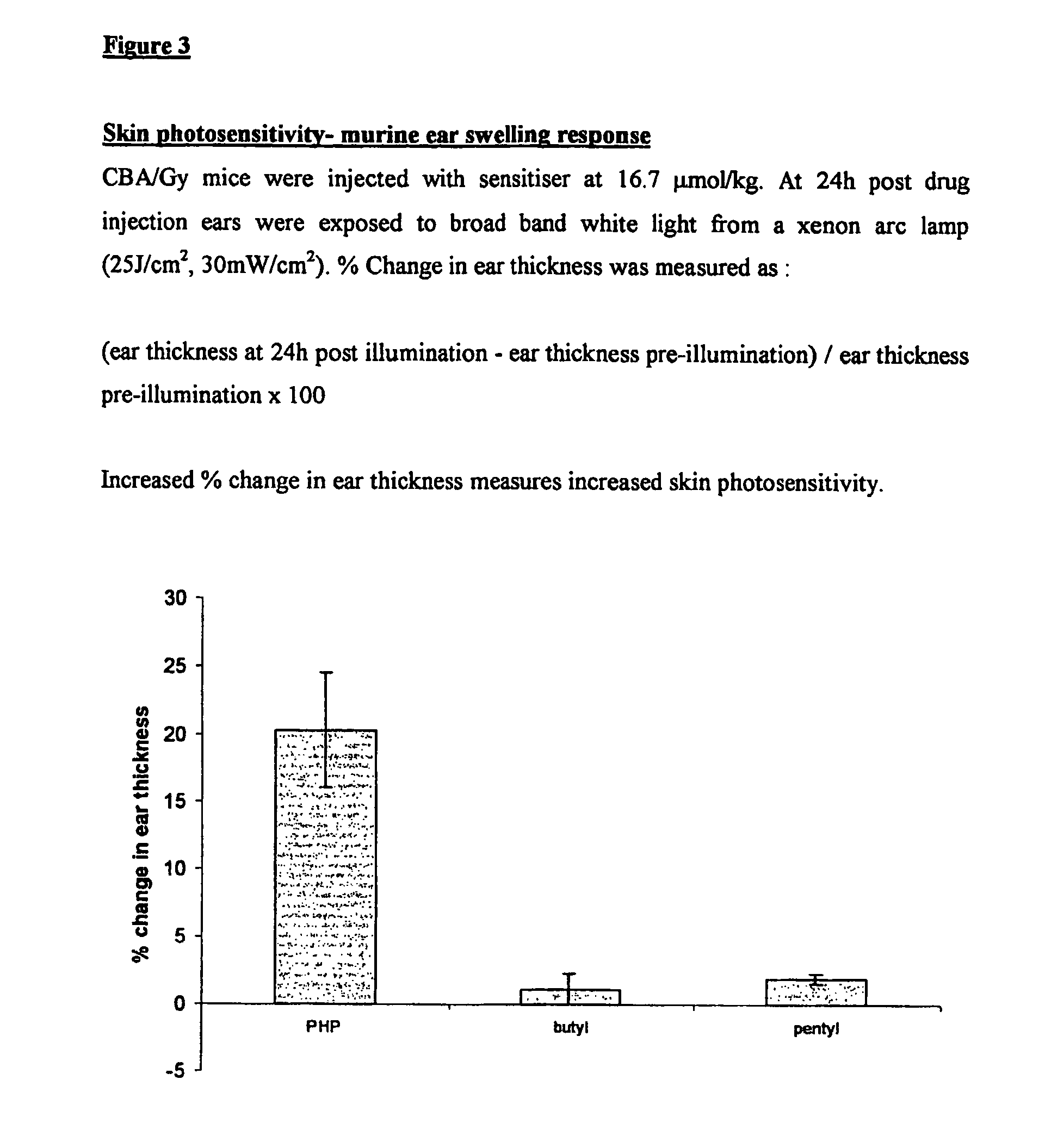Biologically active methylene blue derivatives
a bioactive, blue-type technology, applied in the direction of antimycotics, intraocular lenses, energy-modified materials, etc., can solve the problems of low photochemical antimicrobial activity, unsuitable or low efficacy of photodynamic therapy sensitisers, and restricted use of these photosensitisers
- Summary
- Abstract
- Description
- Claims
- Application Information
AI Technical Summary
Benefits of technology
Problems solved by technology
Method used
Image
Examples
examples
[0160]1) General Synthesis of Symmetrical Phenothiazinium Bromides of Formula I where (A=B=R′R″N— or A=B=N-heterocycle; p=1, Xp−=Br−).
[0161]a) Preparation of 3,7-dibromophenothiazin-5-ium Bromide
[0162]To a solution of phenothiazine (2.00 g, 0.01 mol) (Note 1)in oxygen-free, glacial acetic acid (150 cm3) was added, in one portion and with vigorous stirring, a solution of bromine in oxygen-free, glacial acetic acid (100 cm3, 10% v / v Br2). The reaction mixture became dark with the formation of a dark solid. Stirring was continued for one minute and water (400 cm3) was then added, when the suspension took on a red appearance. The reaction mixture was vacuum filtered to produce a dark solid and a brown filtrate. The solid was washed with ether and dried under vacuum (40° C., 50 mmHg) for one hour to yield a brick red product. Mass of solid=3.63 g Yield=83%.
[0163]b) Preparation of the Symmetrical Phenothiazinium Bromides
[0164]To a solution of the appropriate amine R′R″NH or N-heterocycle ...
example
[0281]Sodium carbonate (0.20 g) and cyanuric chloride (0.30 g) were added to a solution of the sensitiser Ia (0.26 g) in dry acetone (170 cm3) at room temperature, and the mixture was stirred for 15 minutes. A sheet of transparent cellulose film (2.2 g) was immersed in an aqueous solution of sodium hydroxide (1M; 500 cm3) for 10 minutes and then washed free of sodium hydroxide. This was then introduced into the sensitiser solution and the stirred mixture heated at 50° C. for 15 minutes. Water (200 ml) was added and the mixture heated at 60° C. for 30 minutes. The blue cellulose film was then removed and washed with water, and then heated in sodium carbonate solution (6%)to remove any unfixed dye. Covalent attachment to the cellulose was confirmed by heating the film in boiling sodium carbonate solution or boiling methanol, when no blue colour was removed. The film showed typical singlet oxygen generating properties on exposure to light, and when immersed in an air-saturated solution...
PUM
| Property | Measurement | Unit |
|---|---|---|
| wavelengths | aaaaa | aaaaa |
| pH | aaaaa | aaaaa |
| pH | aaaaa | aaaaa |
Abstract
Description
Claims
Application Information
 Login to View More
Login to View More - R&D
- Intellectual Property
- Life Sciences
- Materials
- Tech Scout
- Unparalleled Data Quality
- Higher Quality Content
- 60% Fewer Hallucinations
Browse by: Latest US Patents, China's latest patents, Technical Efficacy Thesaurus, Application Domain, Technology Topic, Popular Technical Reports.
© 2025 PatSnap. All rights reserved.Legal|Privacy policy|Modern Slavery Act Transparency Statement|Sitemap|About US| Contact US: help@patsnap.com



